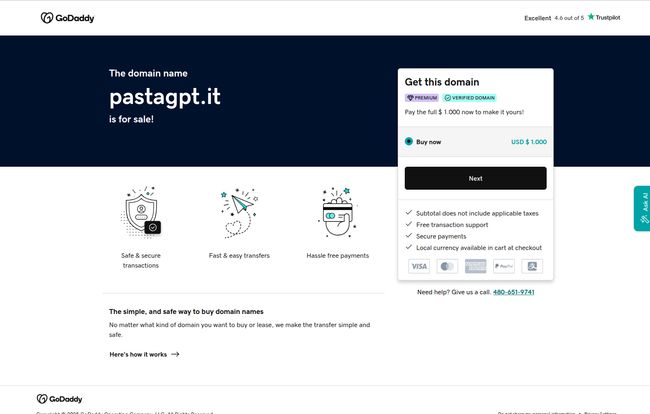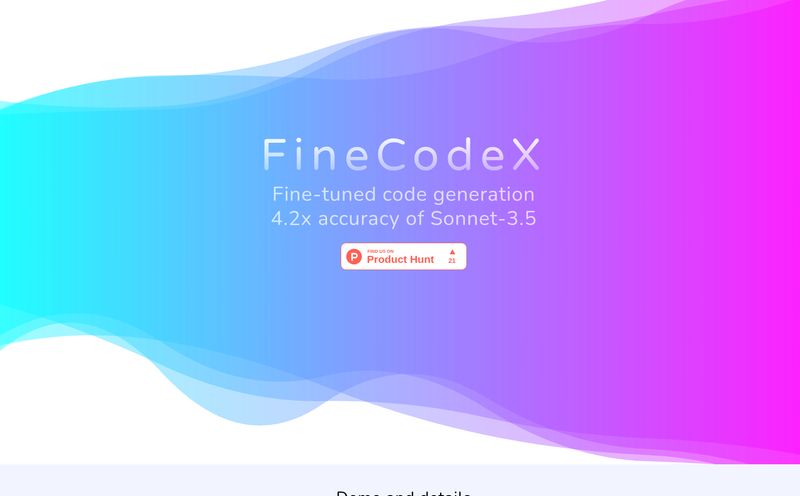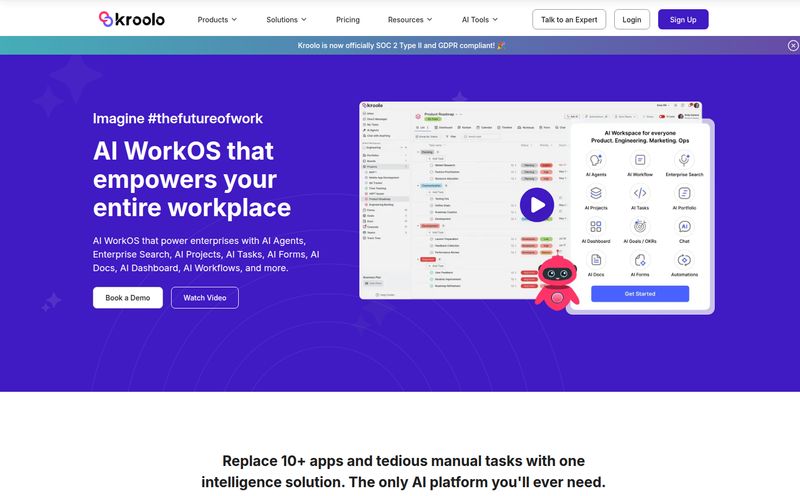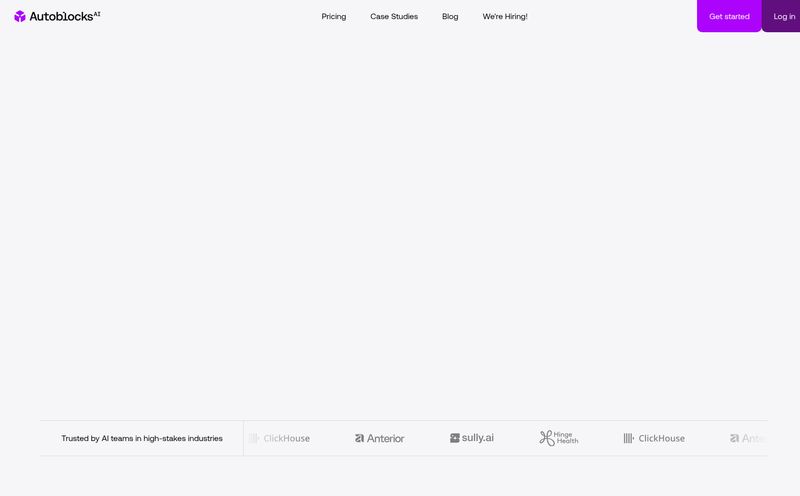Alright, let’s chat. As someone who spends their days neck-deep in SEO trends and traffic analytics, I've seen a lot of AI tools come and go. It feels like every week there’s a new ‘-GPT’ suffix tacked onto a clever noun, promising to revolutionize how we write, code, or even order a pizza. Most are flashes in the pan. Some are genuinely interesting. And some… well, some just disappear, leaving behind a digital mystery.
Today, I want to talk about one of the latter. Enter PastaGPT.
A few weeks back, the name popped up on my radar. An AI chat tool built specifically for Italian speakers. My interest was piqued. The AI boom has been dominated by English-centric models, so seeing a tailored, localized solution is always exciting. It’s a sign of a maturing market. The pitch was simple and compelling: an AI assistant, powered by the mighty GPT-4, but faster, more affordable, and culturally attuned for Italy. Sounds perfect, right? A delicious-sounding alternative to the global behemoth, ChatGPT.
So I decided to pull on the thread. What I found wasn't a bustling platform, but a story that’s all too common in the high-stakes world of tech startups.
What Was the Big Idea Behind PastaGPT?
On paper, PastaGPT had all the right ingredients. It wasn’t just a simple chatbot. The plan was to be a comprehensive virtual assistant for the Italian market. Think of it as a pocket-sized aide for students, researchers, and professionals. The advertised features were pretty solid, aiming to offer specialized help where a more generic AI might stumble. The proposed toolkit included AI-powered chat using GPT-4 for nuanced conversations, the ability to analyze images and answer questions about them (a pretty advanced feature!), and dedicated support for software development, statistical problems and even complex mathematics. It was basically positioning itself as the smart, focused cousin to ChatGPT’s jack-of-all-trades.
The Promised Advantages Over ChatGPT
Every new contender needs a knockout punch, and PastaGPT claimed to have a few. The core marketing message was a direct comparison to its well-known rival. Here’s the gist of what they were selling:
- Always Online: No more waiting rooms or 'high capacity' messages during peak hours. A promise of constant availability is a huge selling point.
- Faster Responses: It claimed to be speedier than ChatGPT, cutting down on that frustrating wait time while the AI “thinks.”
- More Affordable: While the exact pricing was never solidified (more on that in a moment), the goal was to be a more budget-friendly option.
- Unique Features: The image analysis and specialized academic/dev support were meant to be its unique selling propositions.
Honestly, it's a great pitch. It targets all the common grumbles people have with the major platforms. I was genuinely rooting for them. A niche, well-executed product can absolutely carve out a space for itself. But an idea is one thing; execution is another entirely.
So, Where Is It? The $1,000 Question
This is where our story takes a turn. After getting excited about the concept, I went to find the tool itself. I typed `pastagpt.it` into my browser, ready to be greeted by a slick landing page. Instead, I was met with a GoDaddy “domain for sale” page.
Yep. The domain name pastagpt.it is for sale for $1,000.

Visit PastaGPT
That’s it. The end of the road. The project is, for all intents and purposes, a ghost. This isn't just a 404 error or a server that's down; this is the digital equivalent of a “For Rent” sign on a storefront that never even had its grand opening. For the price of a decent espresso machine and a trip to Florence, you could own the digital tombstone of this particular AI dream.
This discovery changes the article from a review into a bit of a post-mortem. What happened? While we can only speculate, this outcome usually points to a few classic startup pitfalls. Maybe the project ran out of funding before it could launch. Perhaps the founders realized the technical challenge of competing on speed and price with OpenAI was far greater than anticipated. Or maybe, just maybe, it was never much more than a landing page to begin with—a way to gauge interest before committing capital. A 'fake door' test, as they say in the product management world.
The Challenge of Building a Niche AI
The fate of PastaGPT is a cautionary tale. Building a successful AI tool, especially a language model-based one, is incredibly hard. You're not just competing on features; you're competing with the foundational research and massive infrastructure of companies like Google, Microsoft and OpenAI.
The Double-Edged Sword of Specificity
Focusing on the Italian market was PastaGPT’s biggest strength and, paradoxically, its biggest weakness. While it creates a dedicated audience, it also caps your potential user base. You have to completely win that market to be sustainable, because you don’t have the safety net of a global audience to fall back on. When your total addressable market is smaller, every misstep is magnified. There’s less room for error.
I've seen this pattern before. A team has a brilliant idea for a specific audience, but underestimates the sheer cost and effort required to maintain the underlying technology, not to mention the marketing budget needed to even get noticed. It's a tough game.
A Lingering Lesson for Marketers and Builders
So, what can we learn from this? For anyone in the tech or SEO space, the story of PastaGPT is a fantastic, if brief, case study. It highlights the volatility of the AI gold rush. For every Rabbit R1 or Humane Pin that gets massive press, there are a thousand PastaGPTs that never see the light of day.
It also reminds us that a good idea and a trendy name aren’t enough. You need a sustainable business model, a clear path to profitability, and the resources to weather the storm. The digital landscape is littered with clever domain names attached to forgotten projects.
I’m a little sad I never got to try PastaGPT. I love a good underdog story. But its tale is a potent reminder: in the world of tech, even the most delicious-sounding ideas can get sent back to the kitchen.
Frequently Asked Questions about PastaGPT
- What was PastaGPT?
- PastaGPT was conceptualized as an AI-powered chat assistant built on GPT-4, specifically designed for Italian speakers. It aimed to provide academic support, problem-solving, and development assistance as a faster, more affordable alternative to ChatGPT.
- Is PastaGPT still available?
- No, it is not. The domain name for the project, pastagpt.it, is currently listed for sale, which indicates the project is defunct and was likely never fully launched to the public.
- Was PastaGPT free?
- The platform was advertised as being 'more affordable' than competitors, but specific pricing information was never released. Its failure to launch means a concrete pricing model was never implemented.
- What were PastaGPT's main features?
- It promised a core GPT-4 chat function, along with unique features like the ability to analyze images, provide specialized assistance for software development, and solve complex statistical and mathematical problems.
- Why was it aimed at Italian speakers?
- The goal was to create a localized AI tool that was better attuned to the nuances of the Italian language and culture, offering a more tailored experience than broad, global platforms like ChatGPT.
- Are there other Italian alternatives to ChatGPT?
- Yes, while the AI space is dynamic, developers and companies are continuously working on localized solutions. A good search for "IA per l'Italia" or "chatbot italiano" will often bring up current projects and platforms, like a new service by the Italian company Almawave, though the landscape changes rapidly.
Conclusion
The story of PastaGPT is a fascinating snapshot of our current moment in technology. It's a tale of ambition, a great niche idea, and the harsh realities of the market. While we never got to see if it could live up to its promises, its ghost serves as a valuable lesson for all of us watching—or building—the future of AI. It’s a reminder that for every success story, there are countless ambitious projects that simply run out of steam. Ciao, PastaGPT. We hardly knew ye.
References and Sources
- GoDaddy Domain Listing: https://www.godaddy.com/domain-broker-service/pastagpt.it
- Almawave's Italian Language Model: Almawave Presents Italian Generative AI Model



